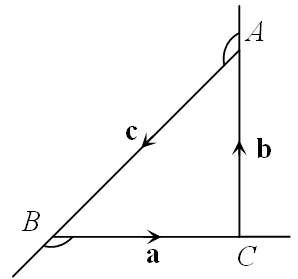Question
Question: Let \(\mathbf { a } , \mathbf { b }\) and <img src="https://cdn.pureessence.tech/canvas_119.png?top_...
Let a,b and  be vectors with magnitudes 3, 4 and 5 respectively and a+b+c = 0, then the values of a⋅b+b⋅c+c⋅a is
be vectors with magnitudes 3, 4 and 5 respectively and a+b+c = 0, then the values of a⋅b+b⋅c+c⋅a is
A
47
B
25
C
50
D
– 25
Answer
– 25
Explanation
Solution
We observe, 
∴ a⋅b=0
 = −16
= −16

= 5⋅3⋅{−cos(cos−153)}=5⋅3⋅(−53) = – 9
∴ a⋅b+b⋅c+c⋅a=0−16−9=−25 Trick: ∙∙ a+b+c=0
Squaring both the sides ∣a+b+c∣2=0
⇒a2+∣b∣2+∣c∣2+2(a⋅b+b⋅c+c⋅a)=0
⇒
⇒ a⋅b+b⋅c+c⋅a=−25

